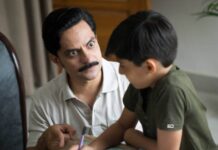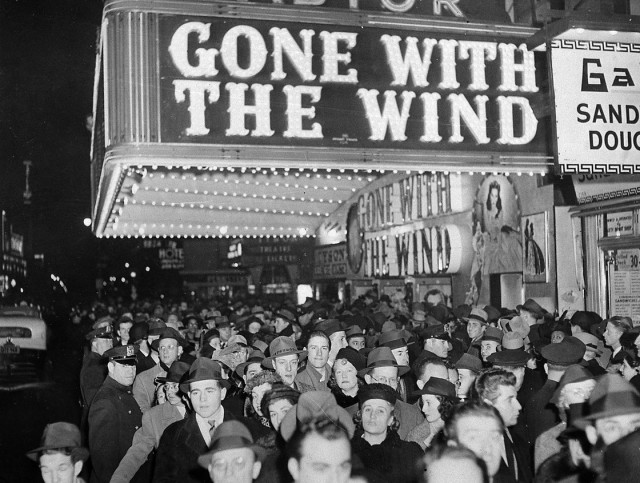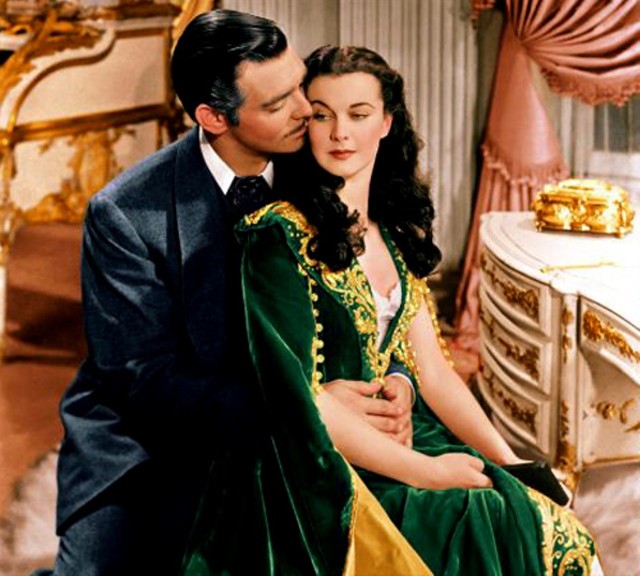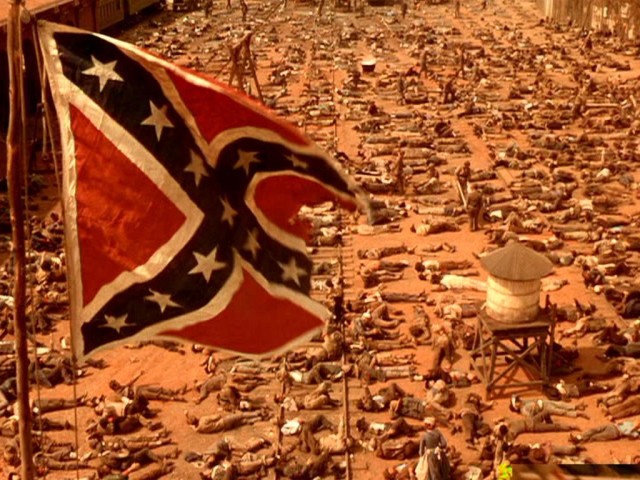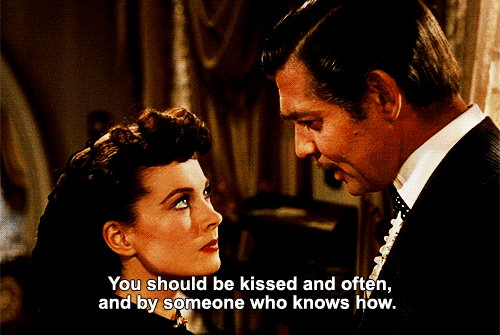DISCLAIMER: The writer will happily blacklist those who haven’t read the novel in question yet, and will gladly see them as literary inferiors. *Mwahaha*
So anyway, what’s a novel without a movie?
More importantly, what’s Gone with the Wind without a visual treat?
This Pulitzer Prize-winning novel’s (written by Margaret Mitchell) movie adaption came out in the theatres of U.S.A. on New Year’s Day, 1939.
Many say that movies never do justice to the novel, but in this case, we can all agree on how GWTW Movie came close to being as wonderful as GWTW Book.
And just as literary criticism is needed for understanding a novel’s success, the same applies to movies – only through reviews. And here’s another one, just for you!
So basically we have the novel, which encapsulates the idea of what a war could do to the unaccustomed mind but leaves the construction of images entirely on the imagination, and then we have the movie, which beautifully captures all the war scenes as well as the tensions and anxieties that were prevalent in all the relationships so depicted.
From the very beginning, it is established for certain that Rhett Butler (the heartthrob! *weeps inconsolably*) would evidently be far superior a character than Ashley, and consequently, a better beau. While the novel takes its own sweet time in proving this point, the movie pinpoints the inequality between the two directly, thus making it easier for the audience to quickly grasp the underlying meanings.
On the flip side, the female protagonist is cleverly selected, for I doubt anybody other than Vivien Leigh would have acted as well as she had. In fact, her selection for the protagonist, Scarlett O’Hara, was finalised after several tries, for she was claimed to be “too British” – a tag which had almost resulted in her dismissal.
Apart from the casting, another laudable aspect in the movie has to be the manner in which the war scenes and its aftermath were shown. The inevitability of the situation is nicely emulated into the scenes, though the belief of the people never really shakes till it gets replaced by sadness, when the South is ultimately defeated.
Considered as the deadliest war fought in U.S. history, the American Civil War had put a dent on the South, pulling it down from prosperity to the clutches of poverty and destruction. This scenario is consequently depicted in the movie through scenes that would literally bring goose-bumps, as it shows bodies of the dead and injured being lined in front of hospitals and the railroad, with the lines stretching till as far as the camera’s lens could reach.
The movie also successfully portrays the scenario within the hospital walls, where women and young girls, sometimes with no medical experience, had to nurse the wounded and the near-dead.
In one such scene, Scarlett is seen fleeing from the hospital because she had happened to witness a doctor amputate an injured soldier, from knee down, because the shrapnel from the bomb that may have burst somewhere close to him in the battlefield, had made a dangerously deep gash. While the incident is wholly imaginary, the real situation must have easily been far worse. All this had been screened beautifully by the movie Director.
It is understandable that a movie adaptation cannot always deliver the novel’s version the way it had been presented to its readers, it could still be safely implied that the ones who had found this novel an interesting read, were surely gladdened. The casting, the acting, the cinematography, the direction, had all blended together to give rise to an Academy Award winning movie.
After all, the attempt made by Directors Victor Fleming, George Cukor and Sam Wood was quite a daring, and definitely a widely appreciated one, for portraying a Pulitzer-winning author’s viewpoint is quite a Herculean task.
Lastly, here’s some quick trivia for all the book-lovers out there:
1. In the scene when Rhett hands Mammy a glass of whisky, you can see her sniff it before drinking. When it was originally filmed, tea was supposed to have been in the glass, but Clarke Gable (Rhett) substituted real whisky as a joke. The actress playing Mammy downed the glass, not realizing what was in it. The scene had to be redone, with tea, and obviously the actress didn’t trust Gable after the first incident. (http://www.moviemistakes.com/film553/trivia)
2. Originally the main character’s name was Pansy and titles considered for the novel itself included “Tomorrow is Another Day”, “Bugles Sang True”, “Not in Our Stars”, “Ba! Ba! Black Sheep”, and “Tote the Weary Load.” (http://www.pajiba.com/think_pieces/mindhole-blowers-20-facts-about-gone-with-the-wind-that-will-make-you-give-a-damn.php)
3. Clark Gable was the early favorite for the role of Rhett Butler, but he was not the only actor considered. In the end he was cast over Gary Cooper, Errol Flynn and Ronald Colman. Gary Cooper was quoted as saying, “Gone with the Wind is going to be the biggest flop in Hollywood history,” and, “I’m just glad it’ll be Clark Gable who’s falling on his face and not Gary Cooper.” (HAHAHA!)
4. Clark Gable was under contract to MGM in 1939 and they did not want to release him to play Butler. In the end an exorbitant contract was reached. Gable would be paid $7,000 ($115,574 today) per week and MGM would get half the profits from the film. Vivien Leigh worked for 125 days and received about $25,000. Clark Gable worked for 71 (non-consecutive) days and received over $120,000.
5. During filming, Clark Gable caused a scandal when he eloped with Carole Lombard during a two day break. They married in Kingman, Arizona with Gable’s agent hosting the “reception” in his car where the bride and groom had sandwiches and coffee. (http://www.buzzfeed.com/donnad/25-things-you-probably-didnt-know-about-gone-wit#.trE8wmLn8
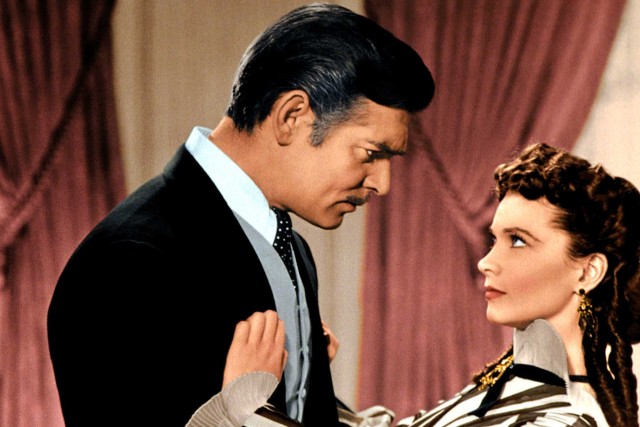
Though basically satisfying the romantic genre, this movie definitely goes a long way to be treated as a tribute to the South, the former Cotton Kingdom.
Image Credits: Google Images























